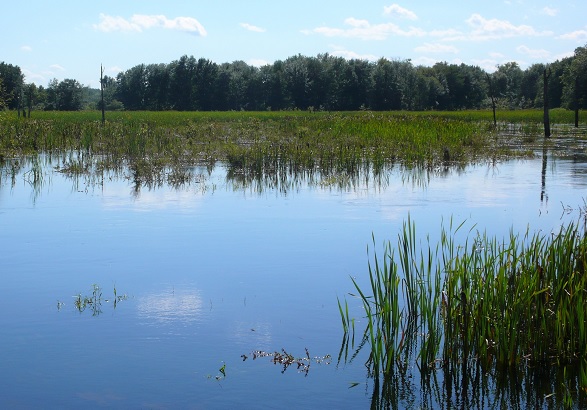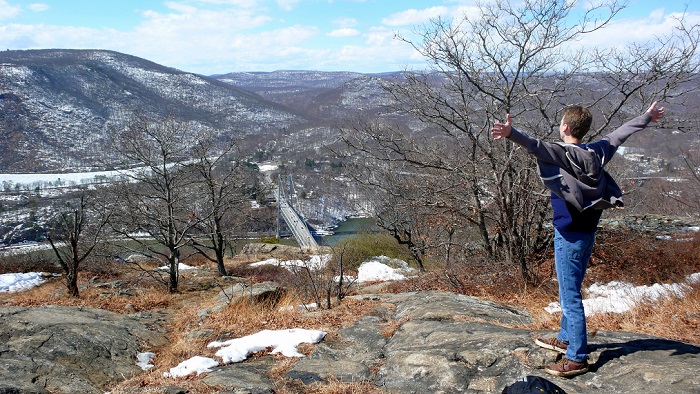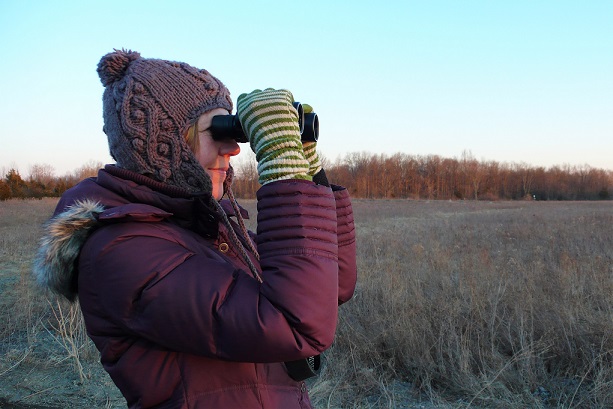Why is this important for people?
Ecosystem services are benefits that people receive from nature.
The estuary watershed not only supports biological diversity of regional, state, and national significance - it also supports the people who live here. Healthy, functioning ecosystems provide many benefits that often go unrecognized or undervalued. In order to ensure these ecosystem services continue for future residents, communities must make smart planning and conservation decisions today.
Ecosystem Services
Healthy ecosystems help to keep drinking water and air clean, moderate temperature, sequester carbon, filter pollutants, absorb floodwaters, and provide for pollination of agricultural crops. They also present opportunities for outdoor recreation and education, and create the scenery and sense of place that is unique to the region.
Here are just a few examples of how people benefit from nature:
-
Forests contribute to clean water by preventing erosion and absorbing nutrients, and by intercepting rainfall, they help to slow the flow of stormwater and let it seep into the forest floor, eventually recharging ground water.
- Wetlands can help to lessen or prevent downstream flooding and associated property damage by storing water, and like forests, help to filter pollutants and sediment from surface water.
- Pollinators like bees, butterflies, and hummingbirds contribute to New York State's ability to produce crops such as apples, grapes, cherries, onions, pumpkins, and cauliflower.
- Research has suggested that biodiversity and human health are interconnected, with declines in biodiversity leading to increased potential for infectious disease transmission. In the Hudson estuary watershed, studies of Lyme disease support this idea.
Nature-based solutions use the power and tools of nature to address issues like climate change, while also supporting biodiversity and providing associated environmental, economic, and social benefits.
Economic Benefits
The ecosystem services described above have great economic value. Many are described in the 2010 report, Economic Benefits of Open Space Preservation, by the Office of the New York State Comptroller. The review found that open space protection:
-
supports industries that generate billions of dollars in economic activity annually
- can be financially beneficial to local governments by reducing costs for public infrastructure and programs, lessening the need for property tax increases
- can support regional economic growth
- need not conflict with meeting other vital needs, such as economic development, municipal fiscal health, and affordable housing.
Tourism and Outdoor Recreation
In the estuary watershed, the enjoyment of nature by both residents and visitors also provides economic opportunity. For example, a report by Tourism Economics found that tourist spending in the Hudson Valley reached $5.5 billion in 2017. The region’s tourism industry employed over 88,800 people and generated almost $682 million in taxes. Similar analyses find the economic benefits of hunting, fishing, and wildlife-watching to be significant; the US Fish and Wildlife Service found that in 2011, residents and non-residents spent $9.2 billion on wildlife-related recreation in New York State.
Studies in the Hudson Valley have also looked at economic benefits of nature in more localized areas, including:
Study of the Economic Impact on the Local Economy of Minnewaska State Park Preserve, Mohonk Preserve, and Sam's Point Preserve, May 2010 (Ulster County)
Economic Impact Study of Business Activities and Economic Value of Ecosystem Services on the Rensselaer Plateau, May 2012 (Rensselaer County)
Cost of Community Services
Cost of community services (COCS) studies examine the costs and benefits of different land uses to local governments; i.e., the tax revenues generated by different land uses and the costs to local government of providing services to those same uses. They help people understand the fiscal consequences of keeping land in open space or as agriculture, versus developing land for other purposes, and can help local leaders understand the true costs of different land uses. American Farmland Trust summarized 83 COCS studies in 19 states in the 2002 report, Cost of Community Services Studies: Making the Case for Conservation. They found that working and open space lands generate less revenue than residential, commercial, or industrial property, but cost less in terms of public infrastructure and community services. For example, for every dollar of revenue raised, on average, the median cost to provide public services for working and open space lands was $0.36 and for residential land was $1.15.
Helpful Links
Economic Benefits of Open Space Preservation (Office of the New York State Comptroller 2010)
2011 National Survey of Fishing, Hunting, and Wildlife-Associated Recreation: New York (US Fish & Wildlife Service 2013)
Cost of Community Services Studies: Making the Case for Conservation (American Farmland Trust 2002)
Economic Benefits of New York's Environmental Protection Fund (Trust for Public Land 2012)



